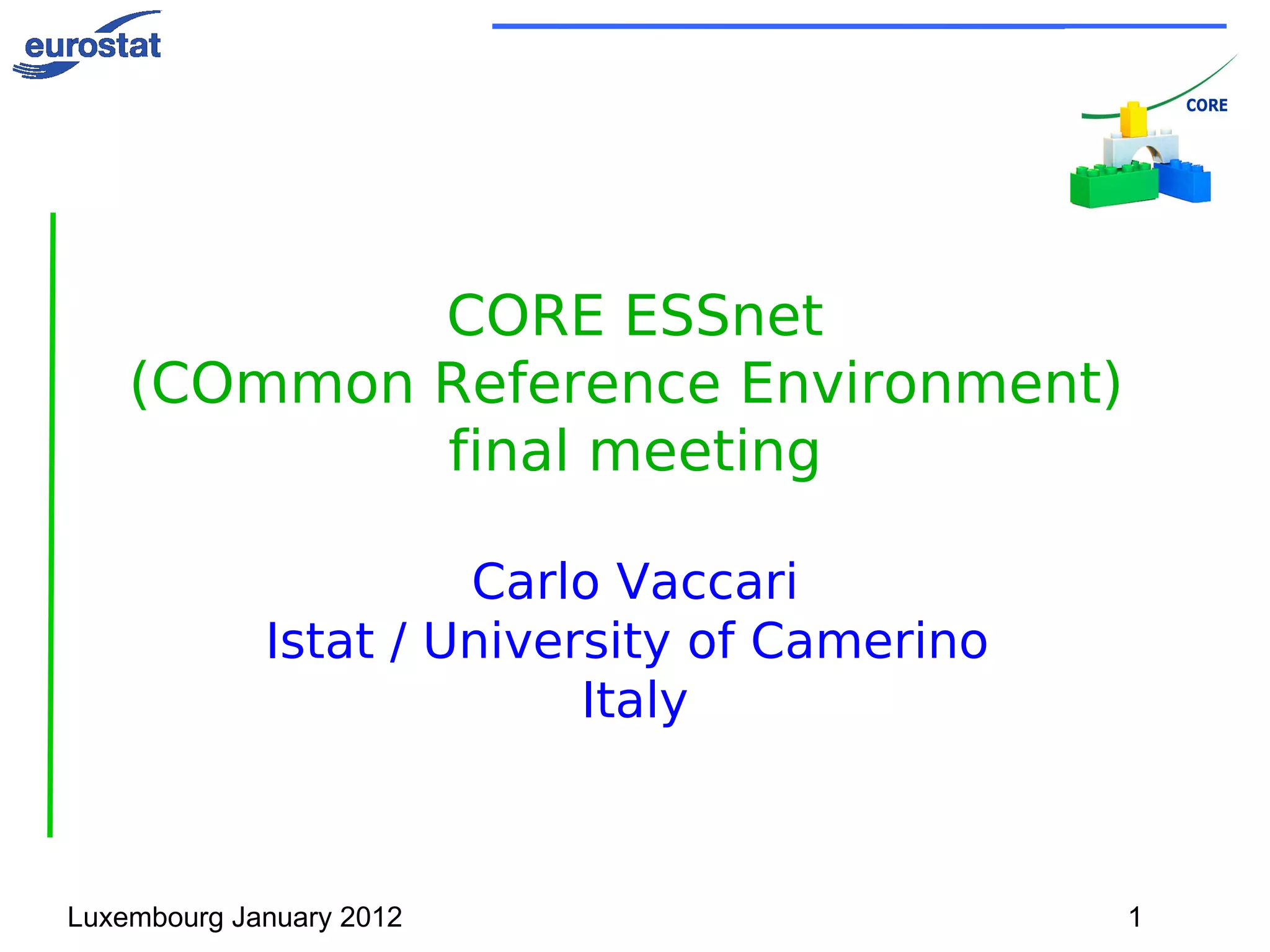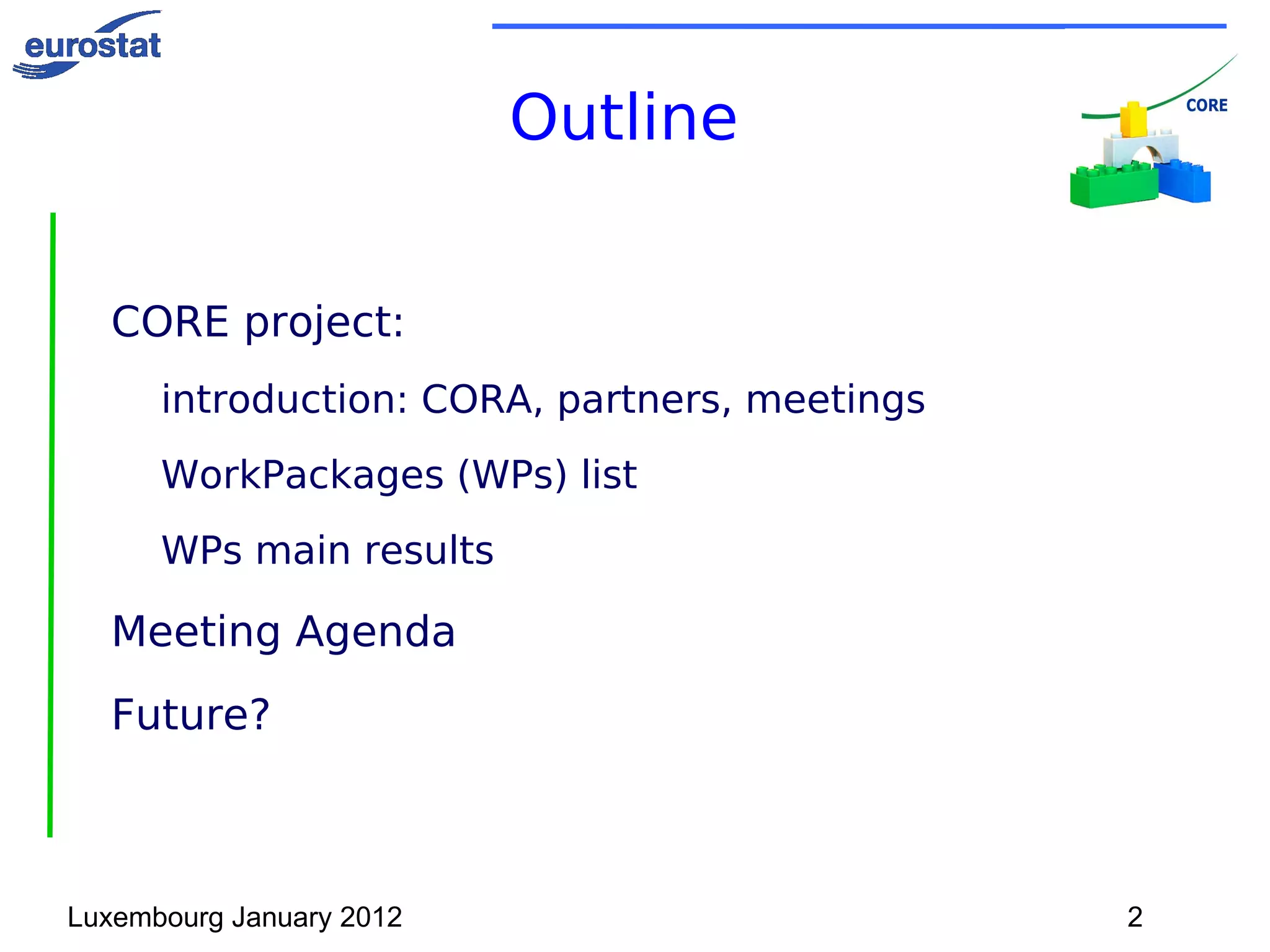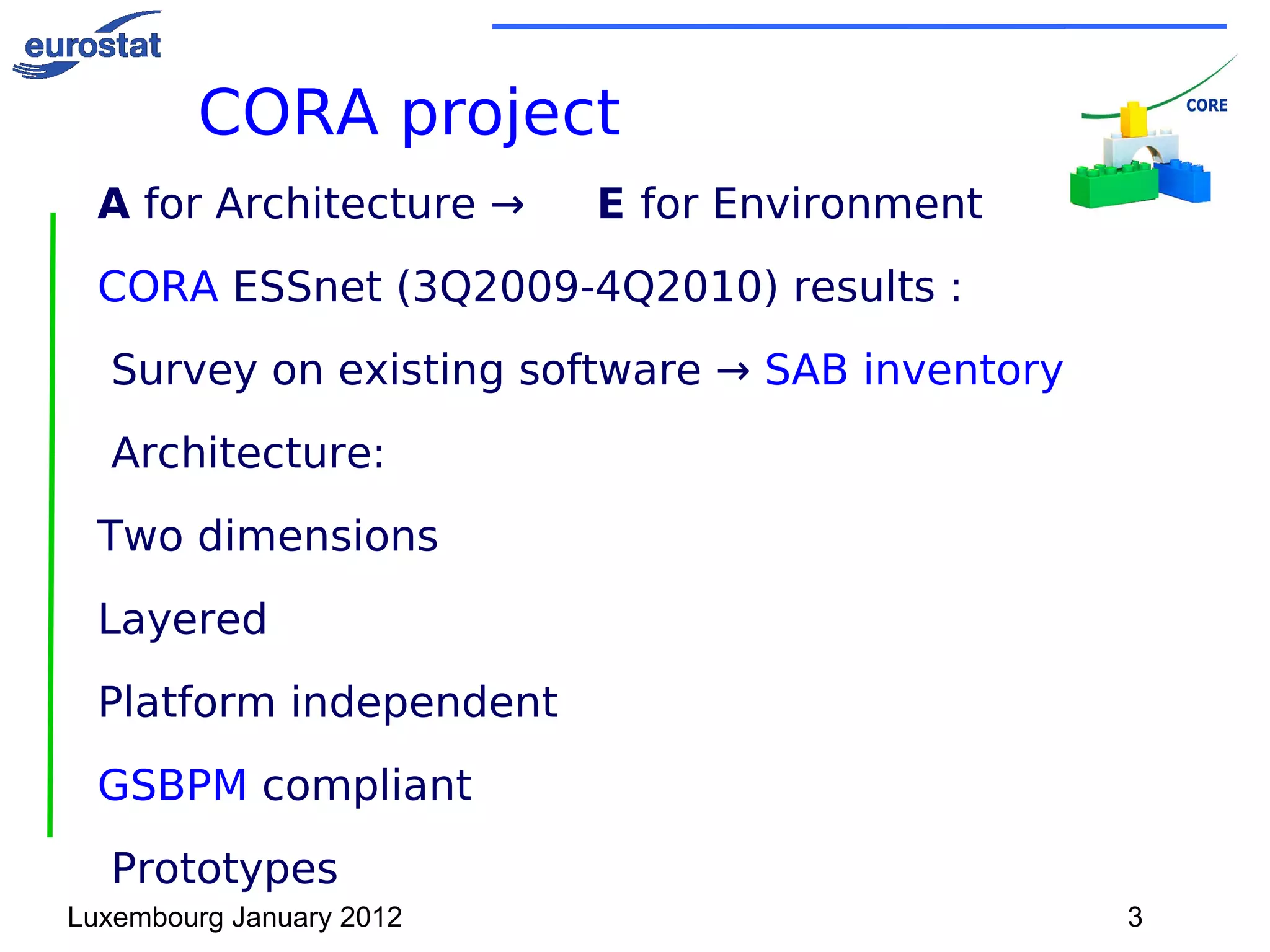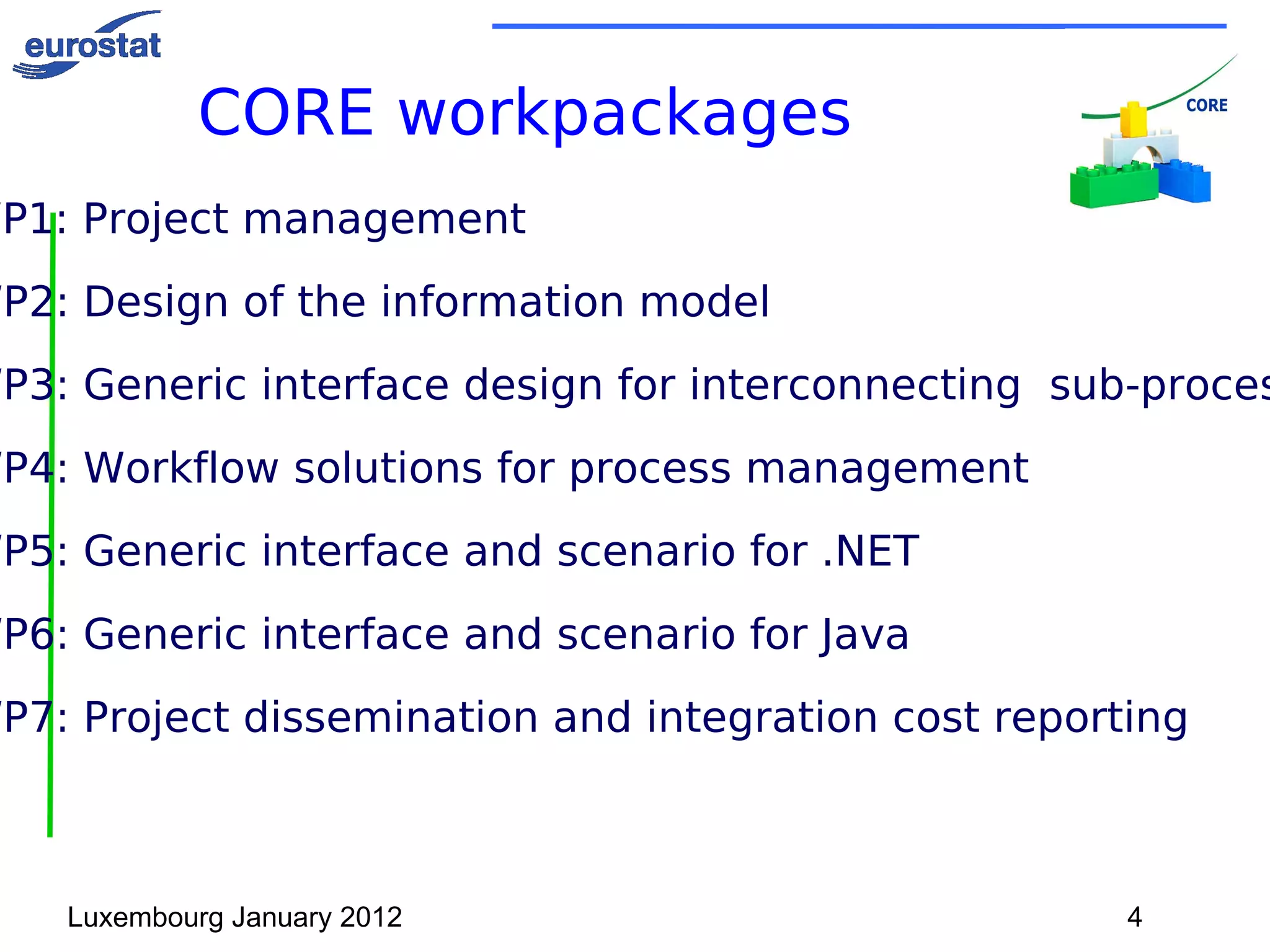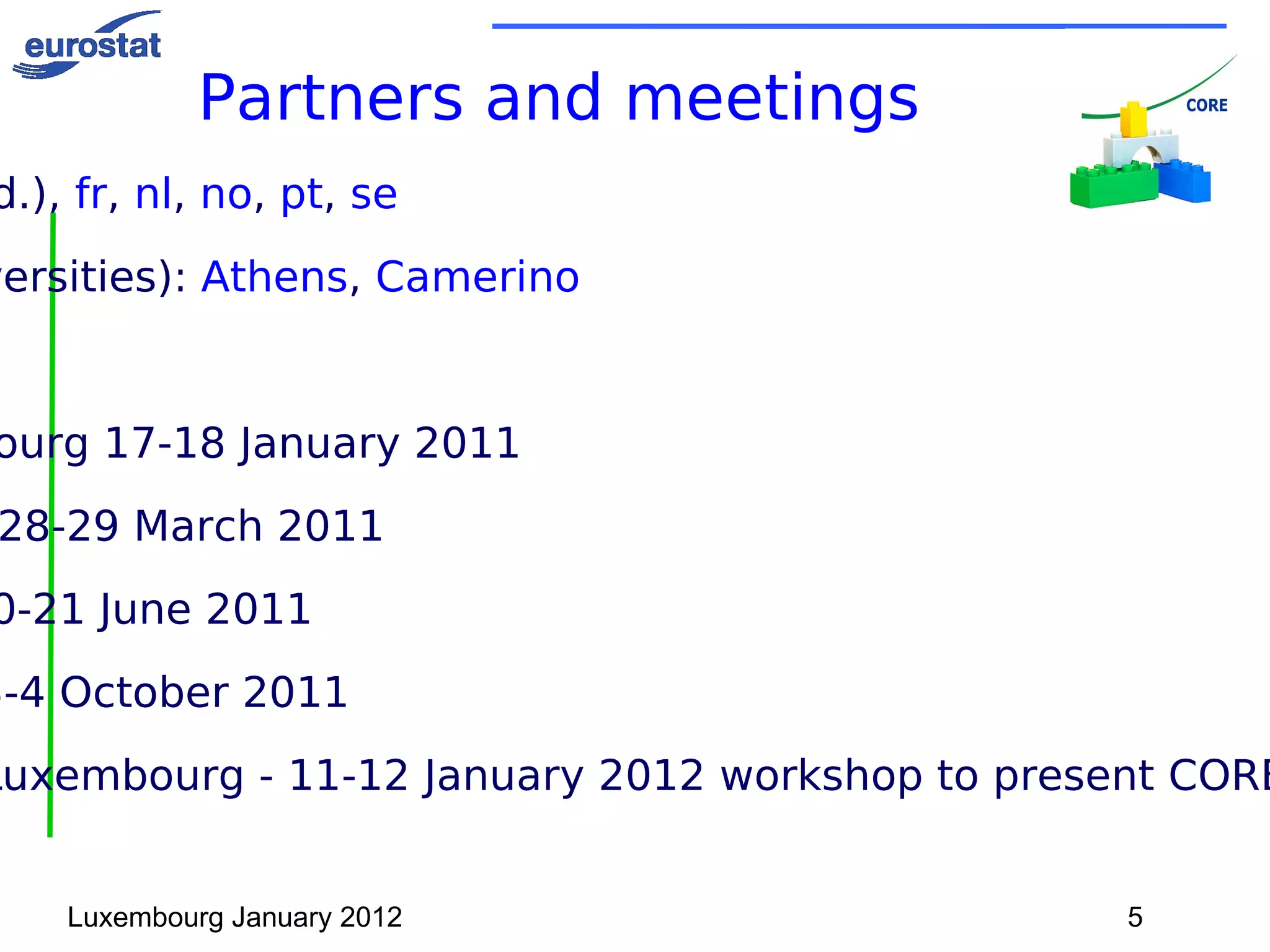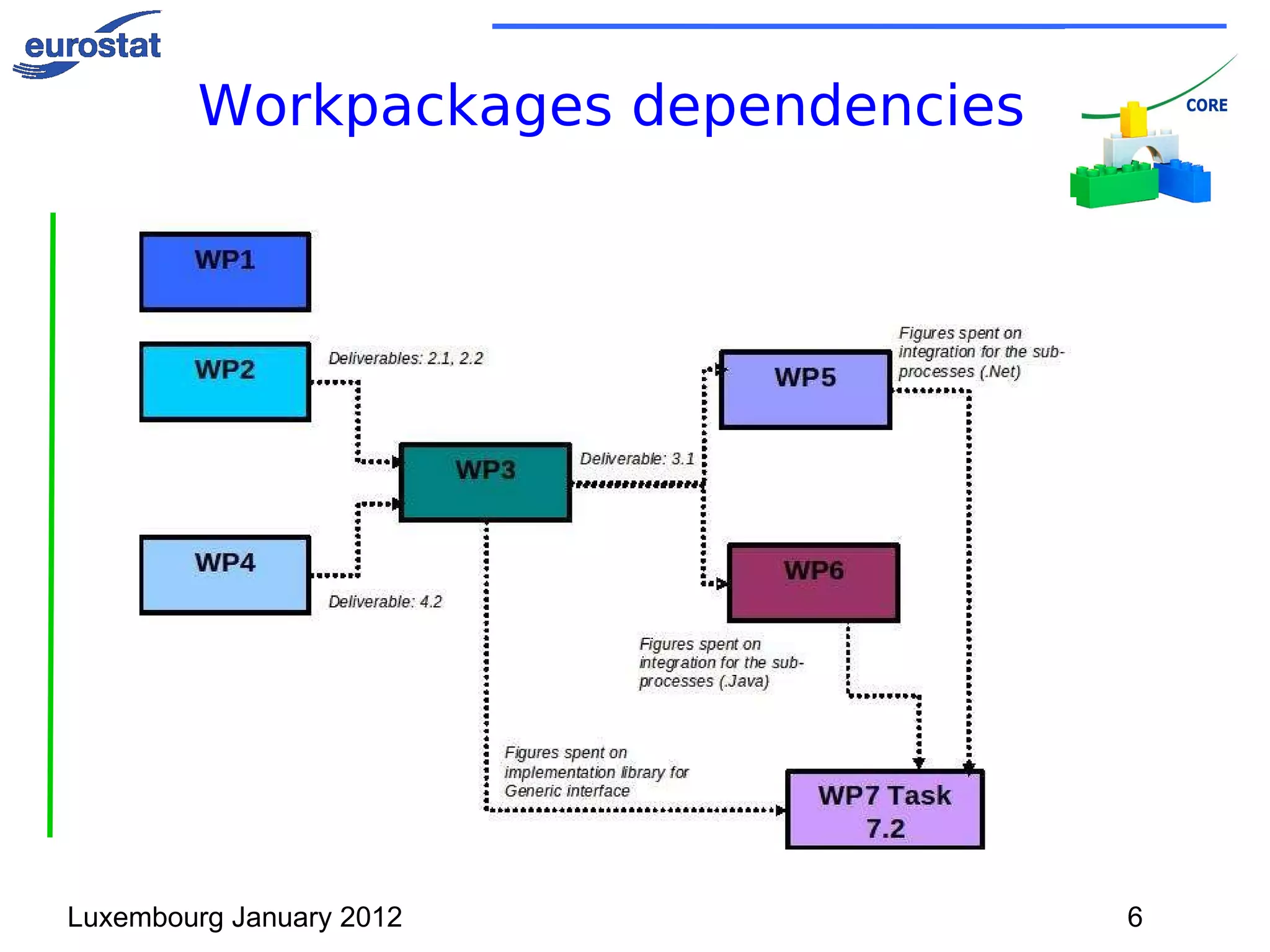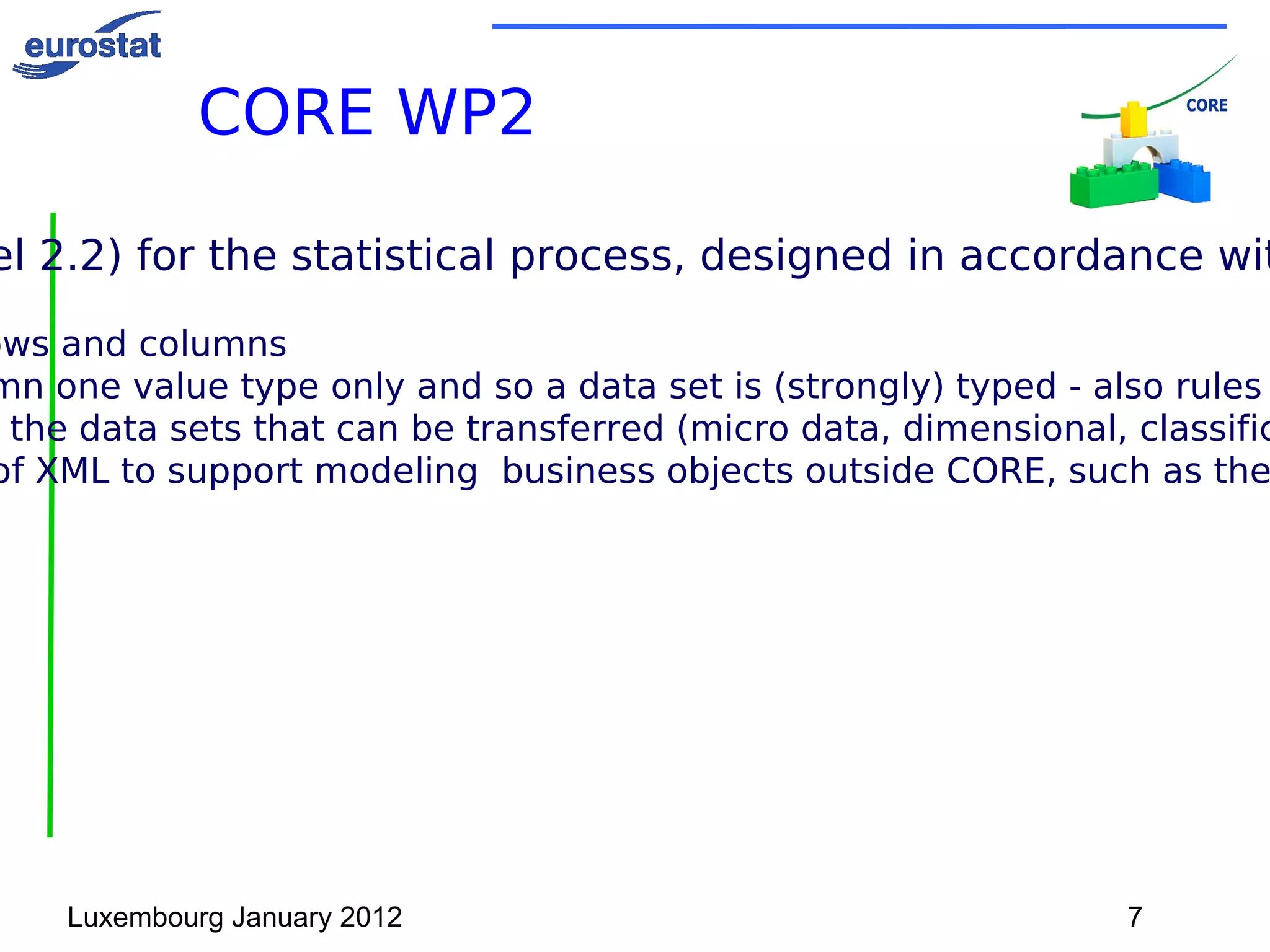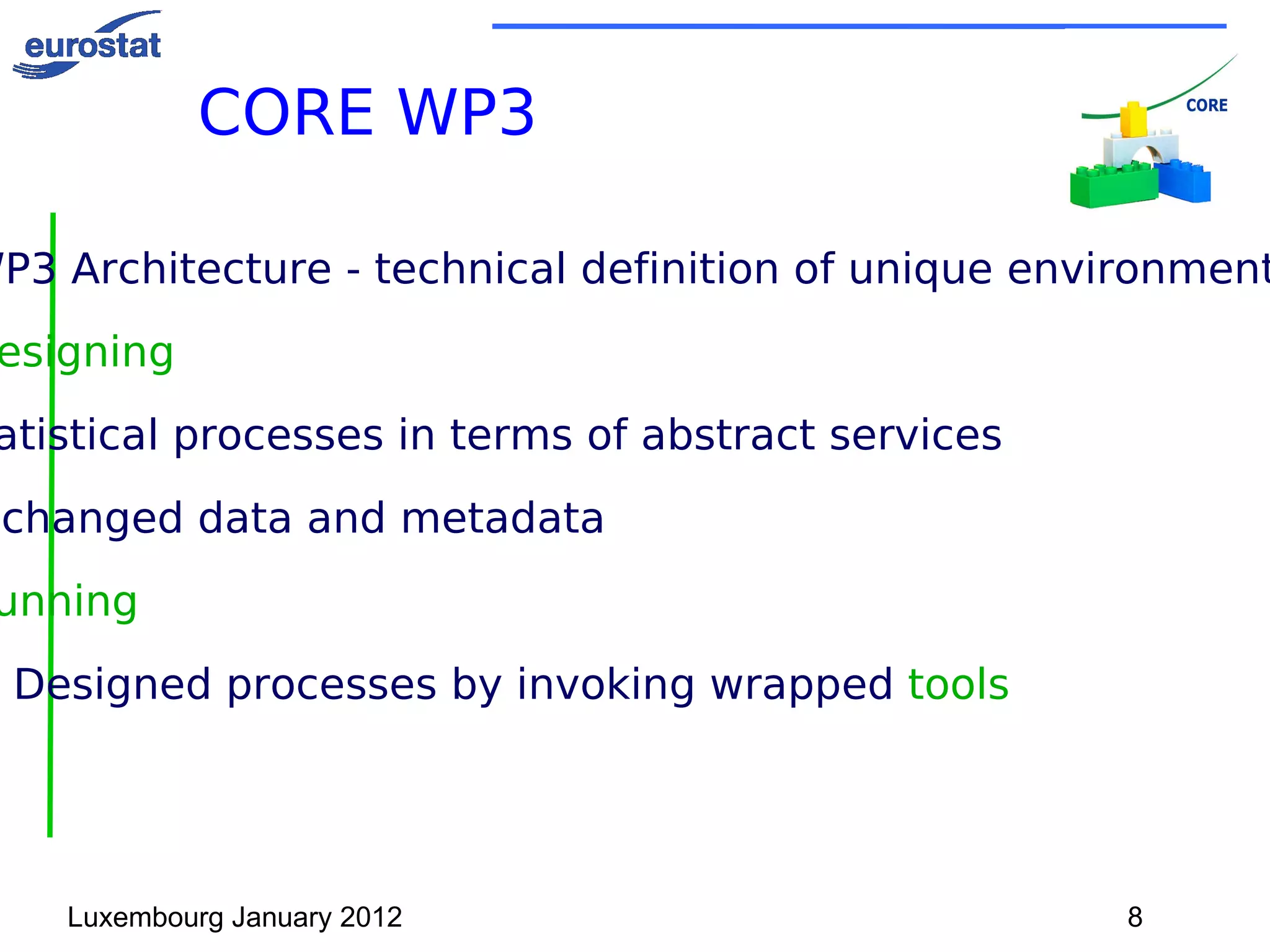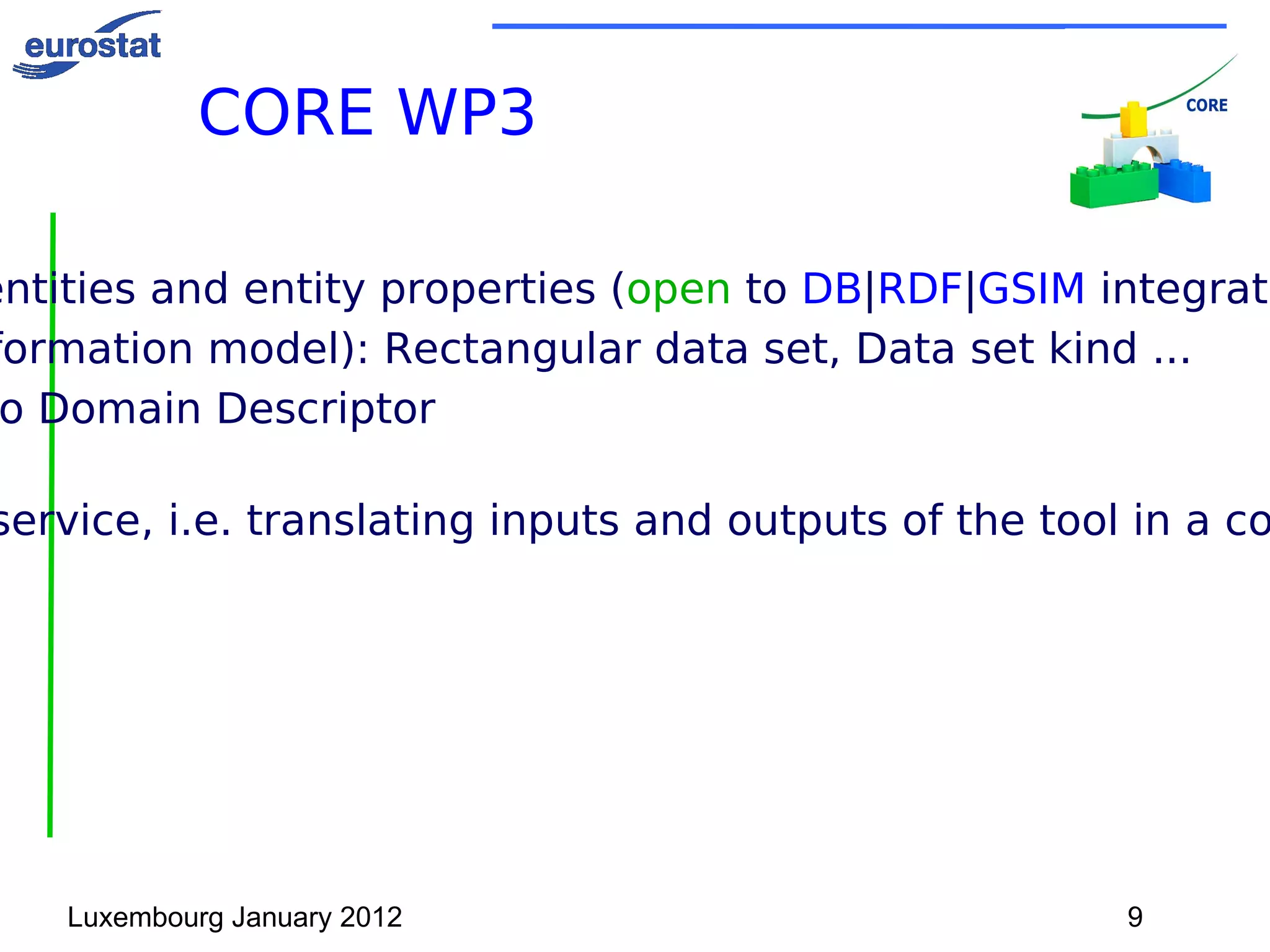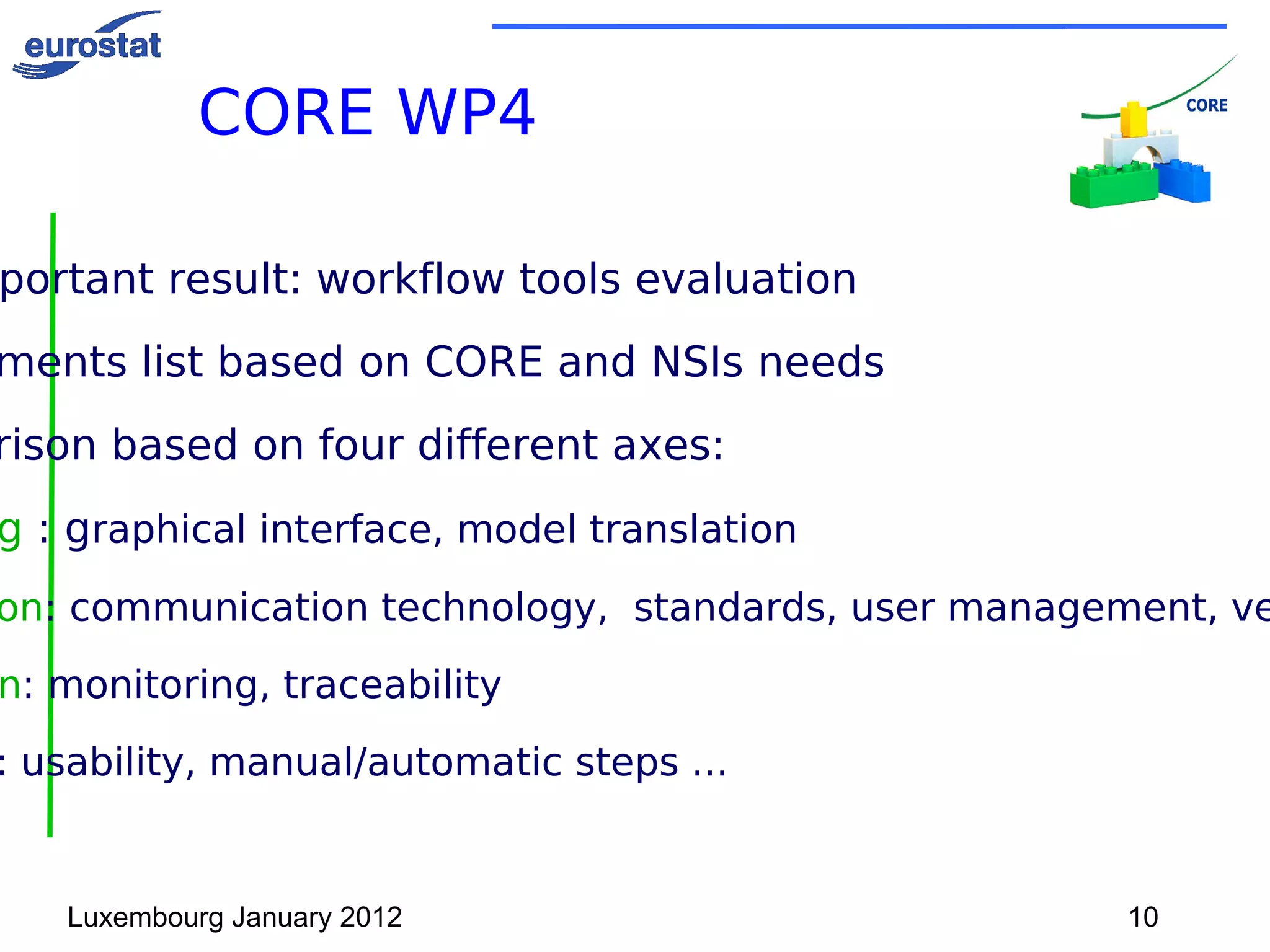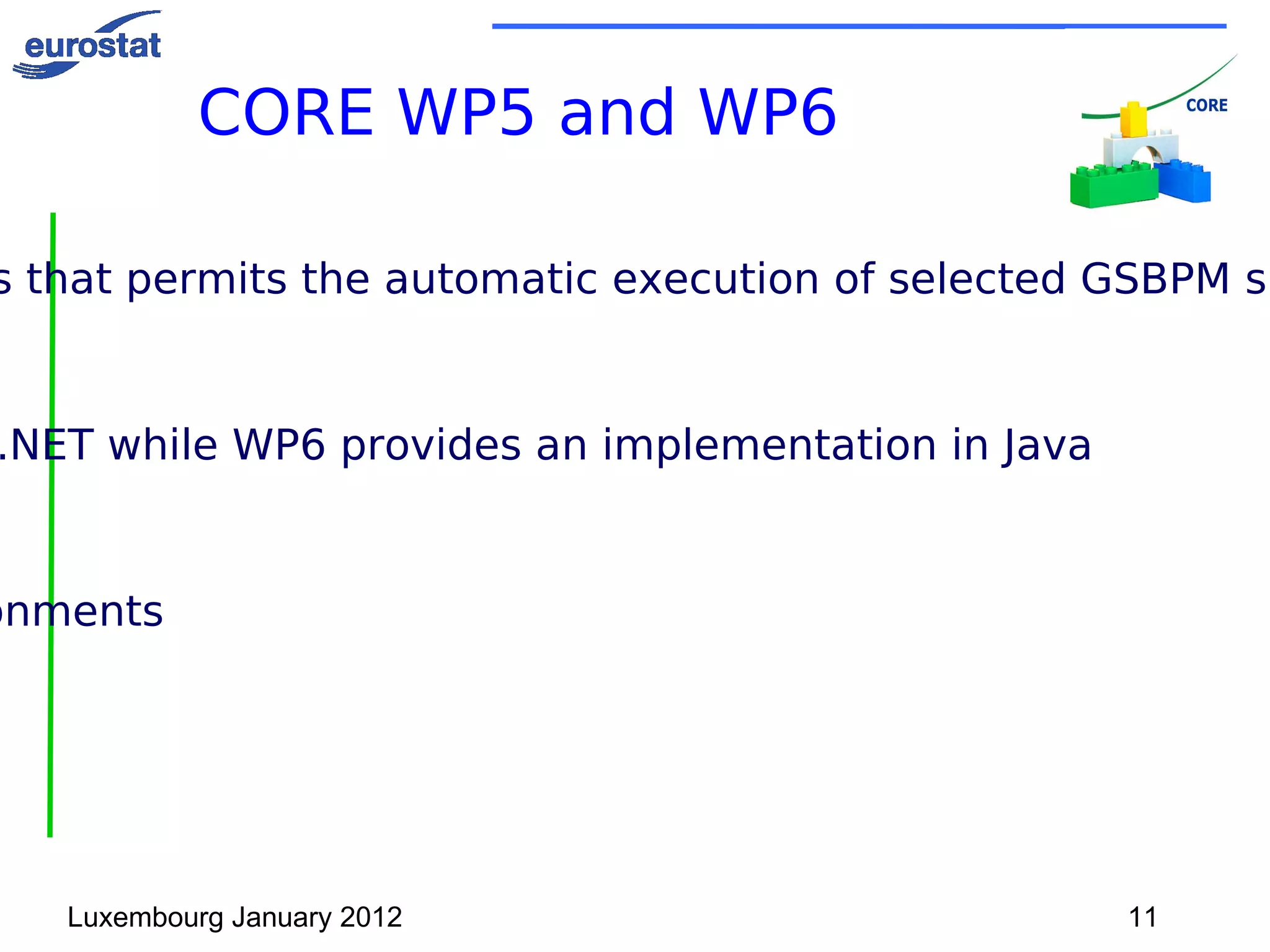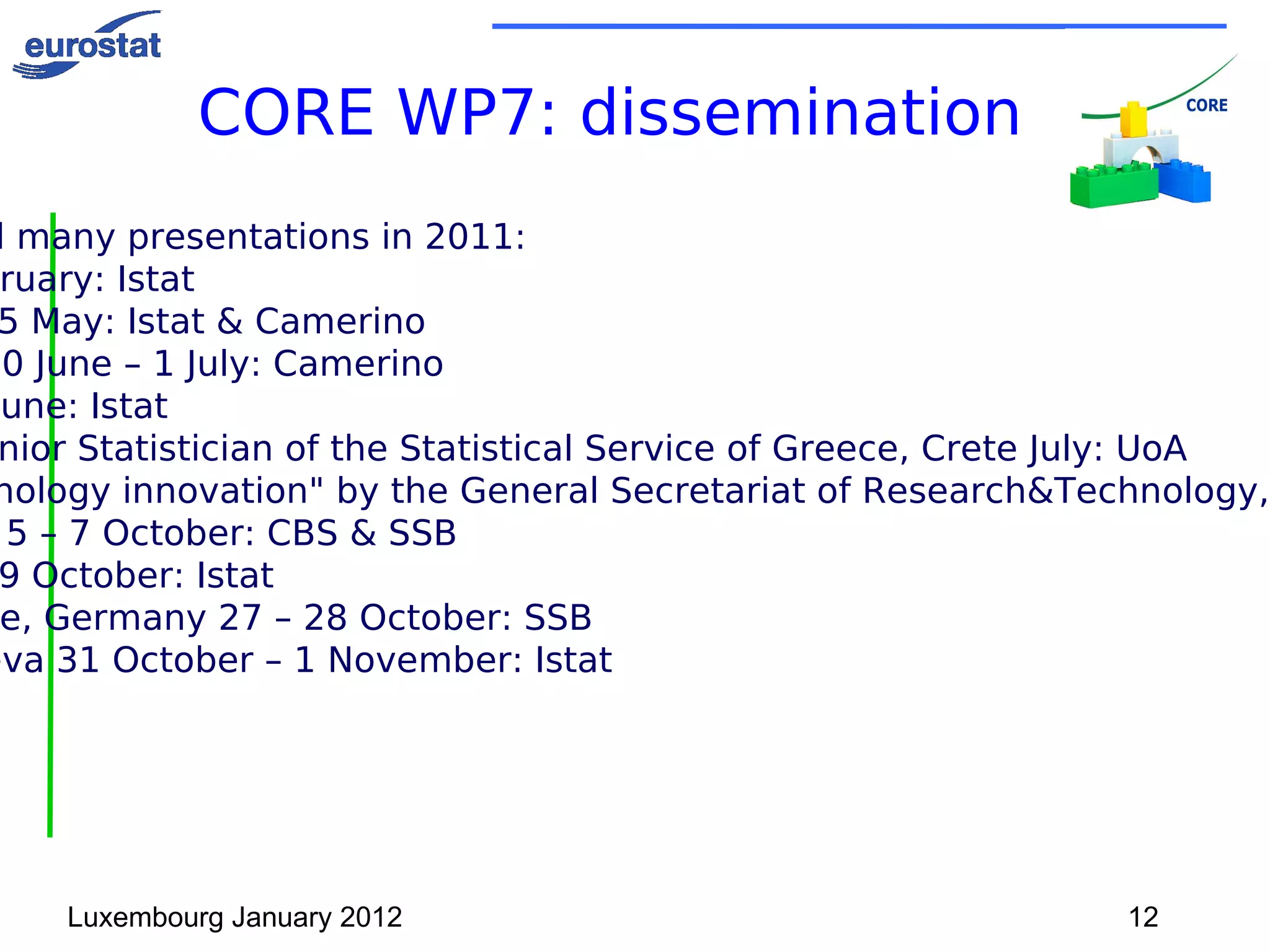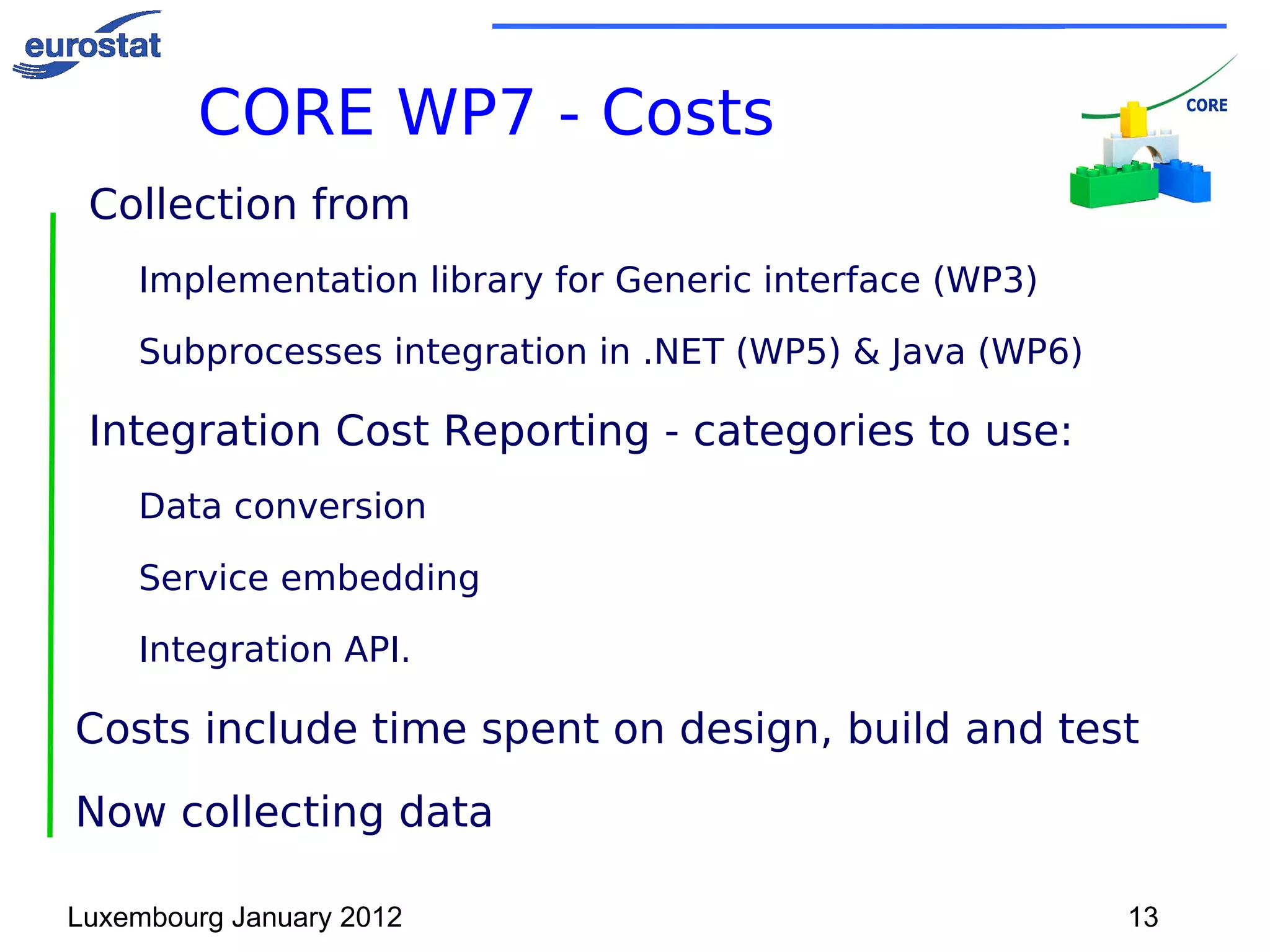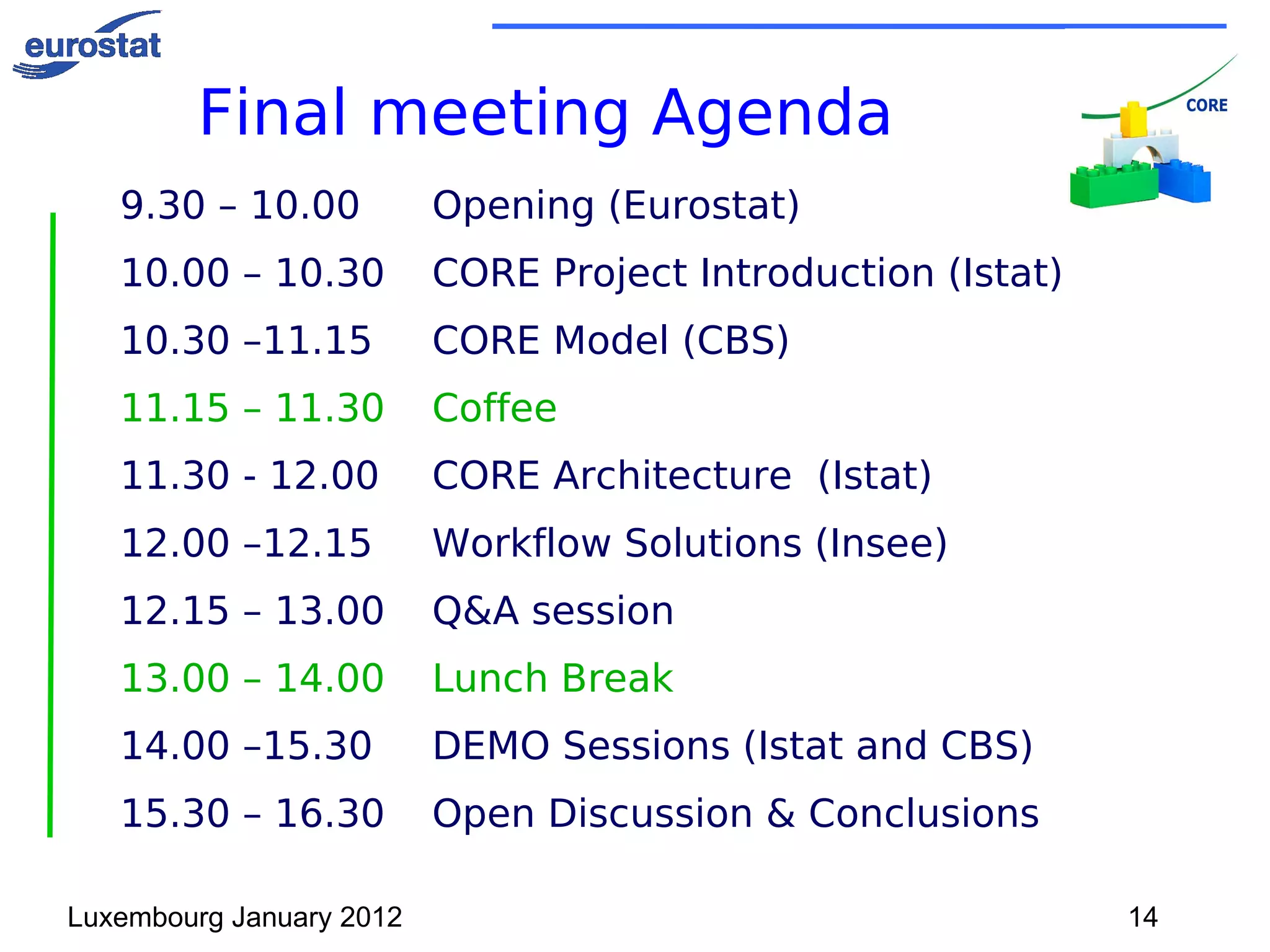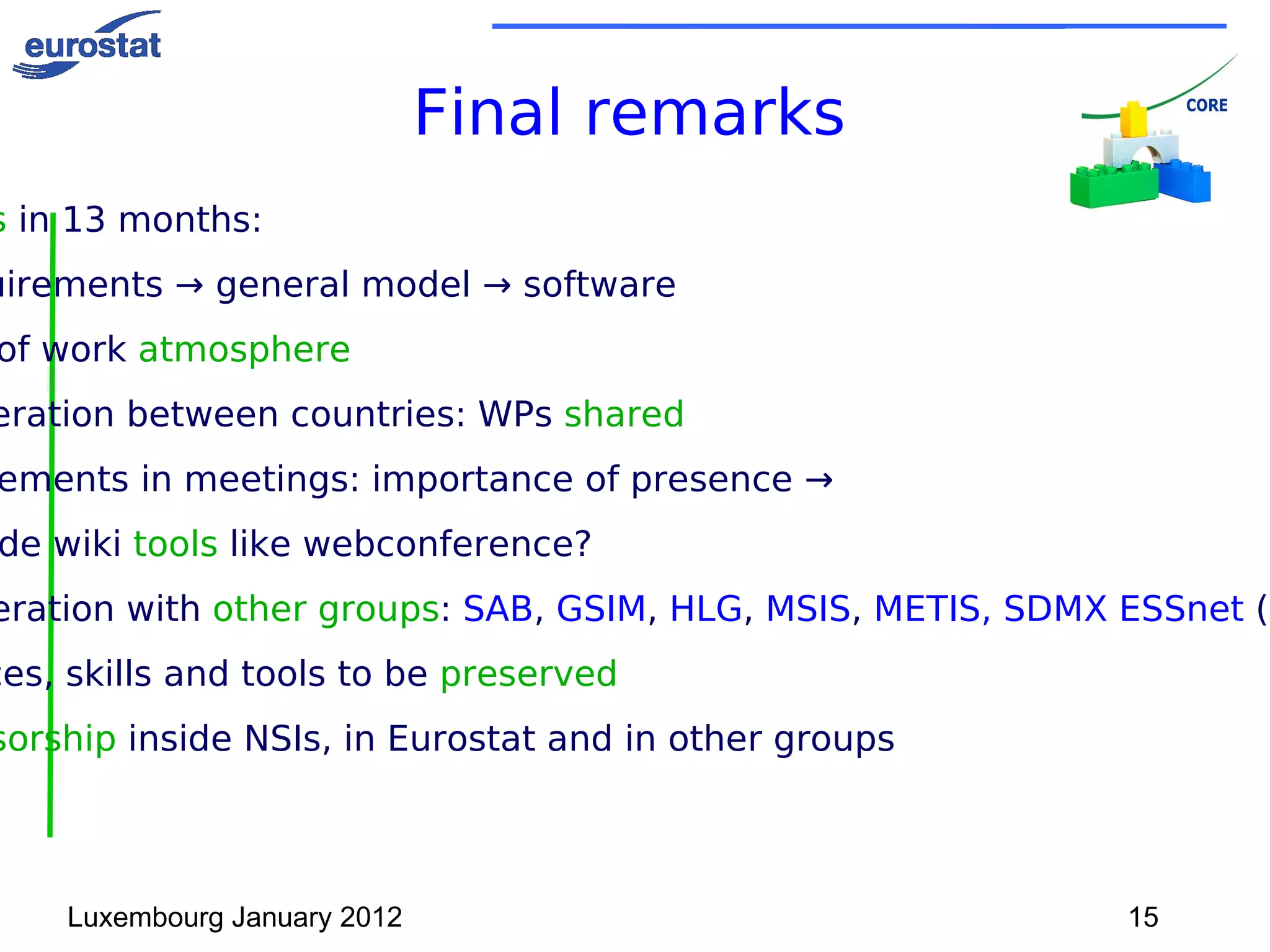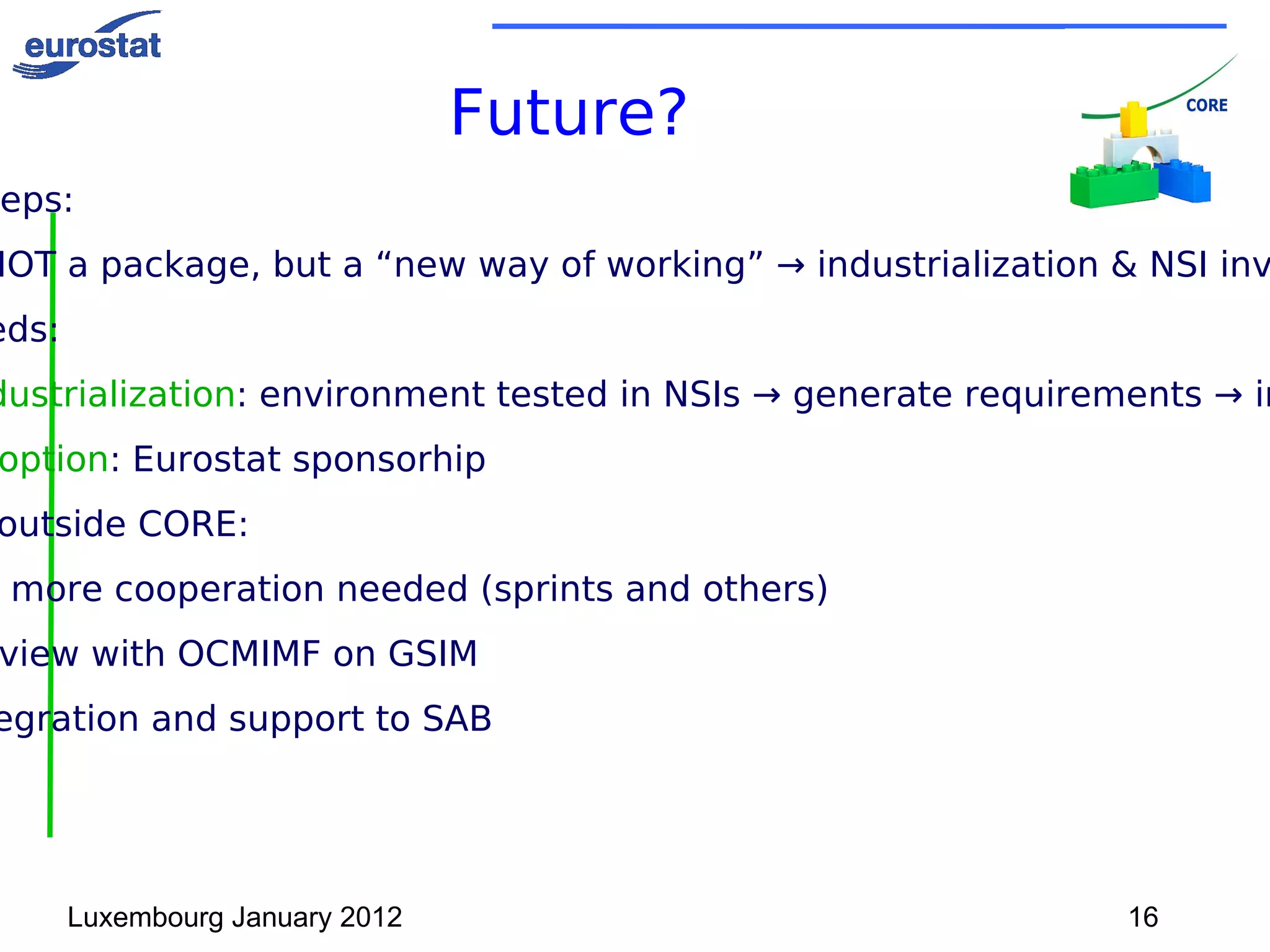The Core ESSnet final meeting discussed the results and future directions of the Cora project, which focused on designing and implementing a common reference environment for statistical processes. Key work packages included project management, information model design, interface development, and workflow solutions, with notable outcomes like the development of prototypes and evaluation of workflow tools. The meeting emphasized the importance of collaboration among partner countries and highlighted the project's contributions to the statistical community and future needs for industrialization and further cooperation.
